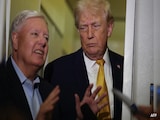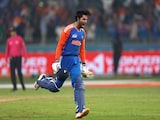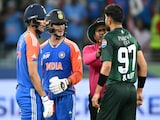"matra-sparshas tu kaunteya shitoshna-sukha-duhkha-dah
agamapayino nityas tans-titikshasva bharata"
The Bhagavad Gita offers the government of India that is Bharat the perfect advice to tackle its Canada problem. The shloka can be loosely translated as: The coming together of senses and stimuli engenders fleeting perceptions of happiness and distress. Neither is permanent. They are cyclical in nature like the winter and summer seasons. O Bharat, one must tolerate them without being disturbed.
While the commentariat may be obsessing about it, the blow-hot, blow-cold situation involving India and Canada is par for the course. It is the norm rather than the exception. The two countries, in their 76-year-long history of diplomatic relations, have locked horns with each other many times over. What is striking in the present situation, however, is that Canadian Prime Minister Justin Trudeau has taken a leaf straight out of his father's playbook. In 1974, Former PM Pierre Elliott Trudeau took to writing a letter to then-Indian Prime Minister Indira Gandhi about the consequences of developing nuclear weapons. Gandhi paid no heed to it and went ahead with India's first nuclear test on 18 May 1974.
Canada alleged that India built its nuclear arms capabilities by 'misusing' the atomic support it received from Canadian reactors. India did not take kindly to this reaction. It was also somewhat hypocritical of Ottawa to stay close to the elite club of nuclear-armed nations while acting as a gatekeeper for the developing nations. Demonstrating classic "middle power" behaviour, Canada wanted to convince the superpowers of its role as an upholder of the rule-based global order. In its outrage, Canada forgot that it almost forced India to receive atomic assistance in 1955 through the Colombo Plan. Through this move, Canada was, perhaps, seeking to establish a balance of power in Asia while showcasing its own technological advancement.
The ties between the two countries worsened in the aftermath of the Emergency declared by Indira Gandhi in 1975. The Liberal government of Canada was not willing to cut India any slack over its rescinding of the promise of upholding democratic values.
In less than a decade, another explosion destroyed whatever was left of the goodwill between the two countries. Khalistan separatism. India saw the botched Canadian investigation of the 'Kanishka' bombing of 23 June 1985-the mid-air explosion of an Air India flight travelling from Canada to India via London-as a massive letdown. All 329 people on board were killed, including 268 Canadian citizens, mostly of Indian origin, and 24 Indians. The K word has been hanging heavy on diplomatic and trade relations between the two countries ever since.
In 1998, Canada emerged as the nation responding most harshly to India's second nuclear test. Ottawa recalled its high commissioner, suspended the expansion of trade relations, shut down channels for humanitarian aid and non-humanitarian loans, and retrenched all diplomatic engagement with New Delhi. It also opposed World Bank loans and promised to jeopardise India's bid for permanent membership of the UN Security Council. Canada prioritised the principles of global non-proliferation over bilateral ties with India. The response impacted trade and cultural exchanges between the two countries.
So, was Canada able to inflict any real pain on the Indian economy or the country's 'soft power'? The answer is a definitive negative. The virtue-signalling sanctions on India, steered by Canadian Foreign Minister Lloyd Axworthy, ended up diminishing Ottawa's influence in New Delhi on nuclear and strategic affairs. Canada also lost what its Minister for International Trade Roy MacLaren proclaimed in 1994 as "one of the most promising markets in the Asia-Pacific region for Canadian business." Till the 1990s, India and Canada were economically irrelevant to each other, though the latter-like all of the West had been scouting for Asian markets for its businesses.
Trade expansion was halted for more than a decade till Indian PM Manmohan Singh visited Canada in 2010 and parlayed with his counterpart Stephen Harper to improve trade, strategic, and cultural relations. In 2015, PM Narendra Modi built on this thawing and improved relations, leading to a jump in trade from $5 billion to $10 billion. In about 10 years after 2010, Canada increased its investment in India from $700 million to north of $55 billion. The figures are still not significant enough for either country to tolerate the other's egregious acts.
What people in India and Canada need to understand, therefore, is that most 'content' from either New Delhi or Ottawa is defined by and targets respective domestic politics. Canada, for example, changed its immigration policy in the mid-1970s and made family reunification the basis of entry because the Liberal government wanted to capitalise on the voting strength of immigrant Canadians. This policy change dramatically increased the Sikh population in Canada. India's ratcheting up of the Kanishka bombing issue has also been largely for the consumption of domestic voters.
This time it is no different. Both Prime Ministers are up for reelection soon and nationalism-in different hues-works as a good electoral currency in both India and Canada. The Sikhs form a sizeable voting population in Canada while Indian Sikhs have been able to force the Modi government to repeal the farm laws.
Canada and India are, diplomatically, in a familiar situationship. They need to keep calm and move on as usual. Like in the Mahabharata, there are no real winners in this war.
(Nishtha Gautam is a Delhi-based author and academic)
Disclaimer: These are the personal opinions of the author.















